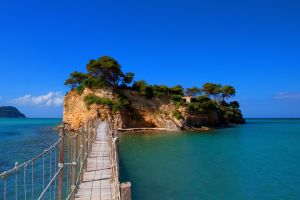Ever taken a stroll through a Swedish village and wondered why everything looks like it’s been dipped in red paint? Those charming red houses aren’t just for show - they have a rich history rooted in practicality and tradition.
Curious to know why? Let's take a closer look at why and how this timeless tradition has become a beloved symbol of Swedish culture.
The Copper Connection
It all started in the 16th century when the red paint - known as Falu rödfärg - was developed. The paint was originally made from copper mining waste from the Falun mines, giving it that distinct red hue. It turns out that copper wasn’t just valuable for coins and tools; it also made pretty durable paint! This red not only became popular for its affordability but also for its ability to protect wooden houses from harsh weather conditions.
A Royal Trendsetter
Like all great trends, painting houses red started with someone influential. In this case, it was King Gustav Vasa, who encouraged the use of red paint to give Swedish buildings a “brick-like” appearance. During this time, brick houses were a sign of wealth and sophistication. The red paint gave wooden homes that same upscale vibe - without the brick price tag! Think of it as Sweden’s version of “faking it ‘til you make it”.
Affordable, But Fabulous
One of the reasons Falu rödfärg became so widespread was its affordability. Not only did it give homes a chic look, but it was also much cheaper than other types of paint. Over time, this practical, cost-effective solution became the go-to choice for Swedish homeowners. You could paint an entire house for under $200 back in the day, making it the Swedish equivalent of IKEA furniture: stylish, affordable, and practical.
All-Weather Warrior
Aside from its aesthetic appeal, Falu rödfärg has some serious staying power. This paint is highly weather-resistant, protecting homes from Sweden’s famously unpredictable weather - whether it’s snow, rain, or sun. The pigment even contains minerals that deter mold and insects, making it an all-around winner for long-term house protection!
Why are Swedish Houses Red?
Video by Bror & Bror
Modern-Day Appeal
While modern paints have flooded the market, many Swedes still prefer good old Falu rödfärg. It’s more than just nostalgia - this paint has proven its worth over centuries, and it’s still a favorite for those building traditional Swedish homes. Plus, it’s eco-friendly! The original formula contains no synthetic chemicals, making it perfect for those looking to embrace sustainable living without compromising on style.
Beyond Sweden
You might be surprised to learn that Falu rödfärg has traveled far beyond Sweden’s borders. Many Scandinavian-inspired communities around the world have adopted the red-house tradition, creating little pockets of Swedish charm across the globe. It’s the ultimate homage to Swedish culture - and a fun way to stand out in any neighborhood!
Who knows - maybe red really is the new black!


